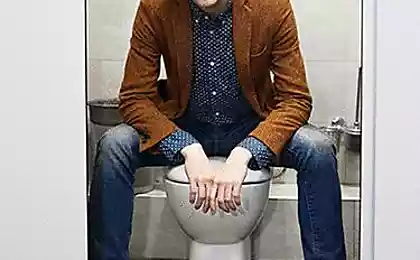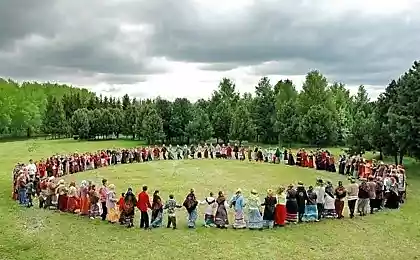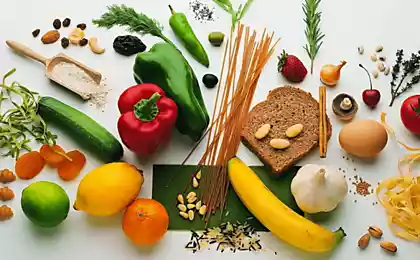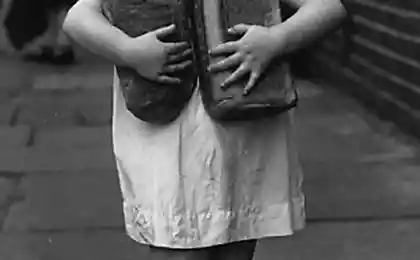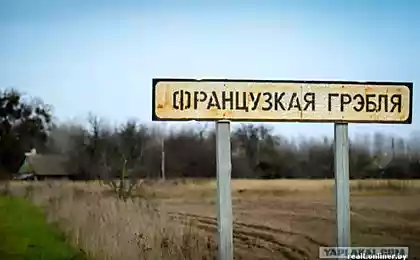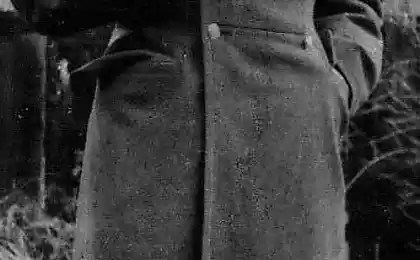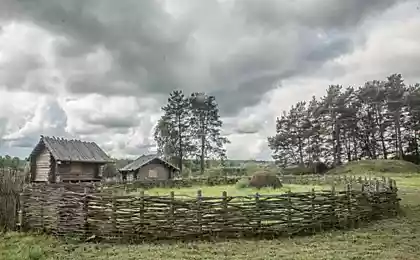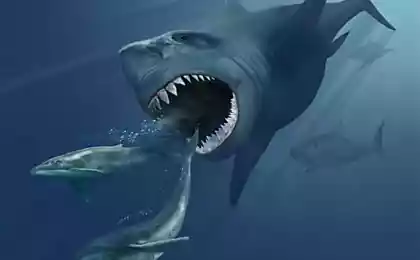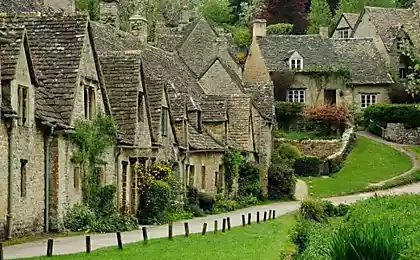15457
How they lived and what our ancestors ate
Let us recall how our ancestors lived, what to eat and what to wear.
If someone thinks that life was sweet while, something very wrong.
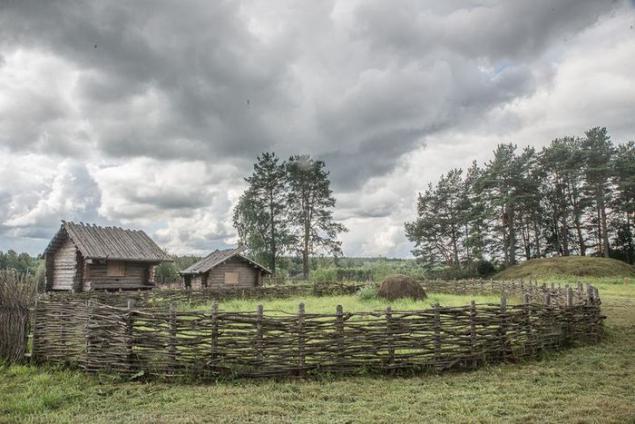
Prior to this, a simple Russian peasant life was very different.
Usually the person was living up to 40-45 years and died an old man. A grown man with a family and children, he was considered in 14-15 years, and it even earlier. Get married not for love, wooing the bride's son went to his father.
Time for leisure activities people did not have at all. In the summer time, everything takes work in the winter firewood and homework for the manufacture of tools and household utensils, hunting.
Let's look at the Russian village of the 10th century, which, however, differs little from the village as the 5th century and 17th century ...
In the historical and cultural complex "Lubytino" We were under the rally dedicated to the 20th anniversary of the group of companies "Autoworld". He was not in vain is called "Single storey Russia" - see how our ancestors lived, it was very interesting and informative.
In Lubytino on the place of residence of the ancient Slavs, among mounds and graves real village recreated 10th century, with all the outbuildings and the necessary utensils.
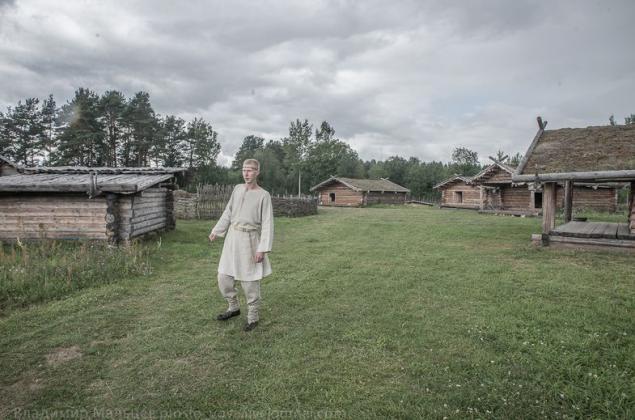
We begin with the common Slavic hut. Cabin rubles of logs and covered with birch bark and turf. In some regions, such as the roof huts were covering with straw and wood chips somewhere. Surprisingly, the service life of such a roof is only slightly less than the life of the entire house, 25-30 years, and the house served as age 40. Given the time of life at that time, the house is just on human life and missing.
By the way, in front of the house covered platform - these are the canopy of a song about the "new canopy, maple».
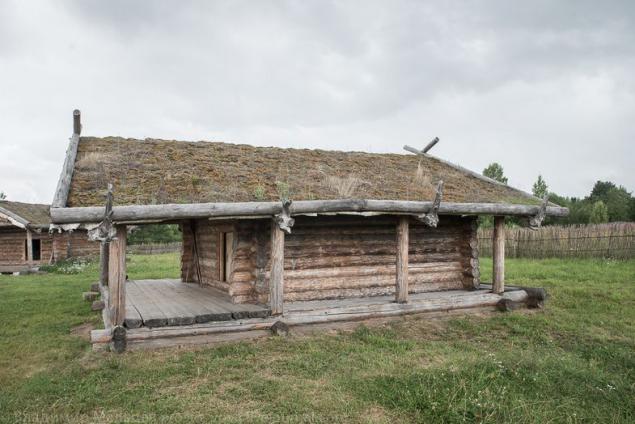
Fired hut on black, that is, the chimney stove does not have smoke coming out through the small window under the roof and through the door. Normal windows either, and the door height of only about one meter. This is done in order not to let the heat out of the house.
When the furnace furnace soot deposited on the walls and roof. In the furnace of "the black" has one big advantage - in a house like no rodents and insects.

Of course, the house is on the ground without any foundation, the lower crowns simply rely on a few large stones.
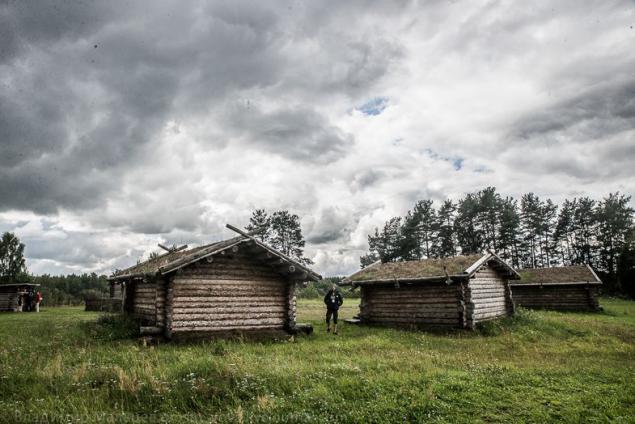
That's the way the roof is made

And here is the oven. Mounted on a pedestal of clay-covered stone fireplace logs. Stoked the furnace in the early morning. When the oven is heated, it is impossible to be in the house, there was only a housekeeper, cook, all the rest went into the street to do business, in any weather. After oven heat their stones gave heat until the next morning. In the oven and cooking food.
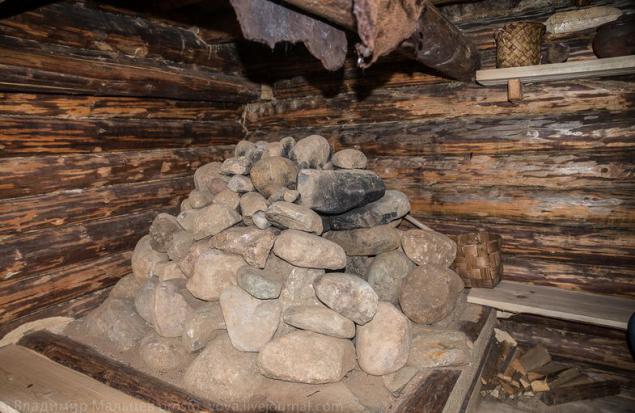
Here is the inside of the hut. Slept on benches, arranged along the walls, they sat eating. The children slept in the loft, in this photo can not see them, they are top of the head. In winter, the house took young livestock, so he did not die from the cold. The hut also washed. Can you imagine what the air was there, as it was warm and comfortable. It becomes immediately clear why life expectancy was so small.
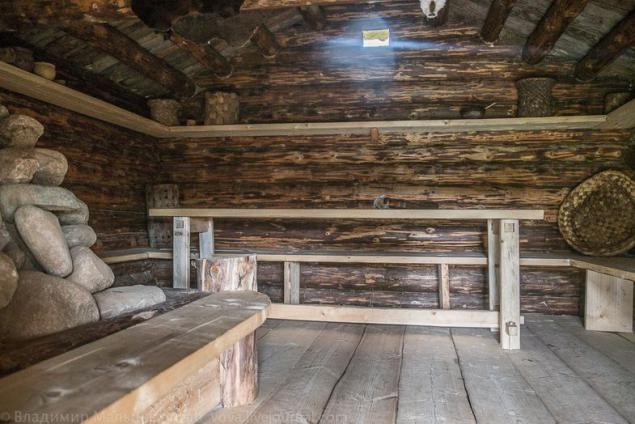
In order not to drown the house in the summer when it is not needed, the village had a separate small building - bread oven. There baked bread and cooked.

Grain was stored in the barn - building, raised on poles above the ground to protect products from rodents.
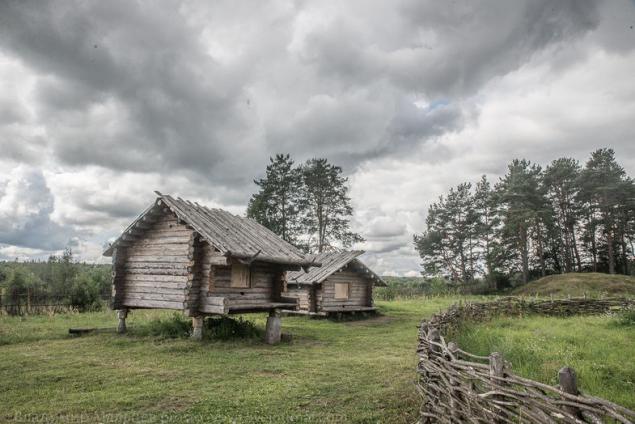
In the barn were built Soucek, remember - "bottom of the barrel scraped ..."? This special wooden boxes in which the grain fell asleep on top, and took him from below. Since grain is not stale.
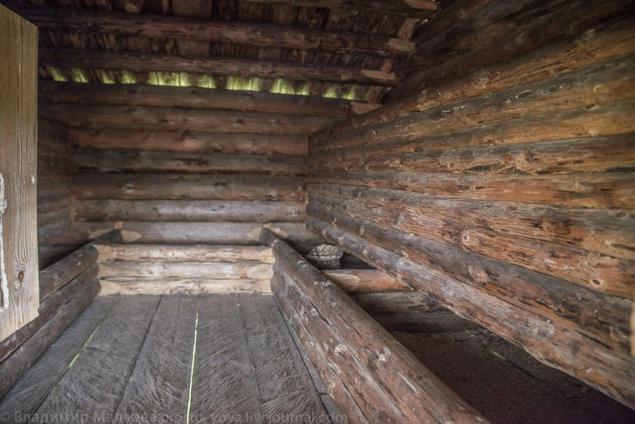
Also in the village was tripled glacier - the cellar, which was laid in the spring ice, pour hay and lay there almost until next winter.
Clothing, skins, not currently required utensils and weapons were stored in crates. Also used the cage when the husband and wife had to retire.
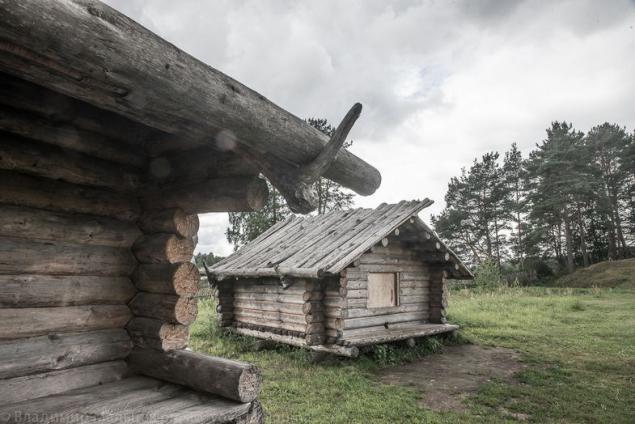

Barn - this building was used for drying sheaves and threshing grain. The heated stones were formed in the center, on the poles fit bundles and peasant drying them, constantly turning. Then threshed grain and veyalis.
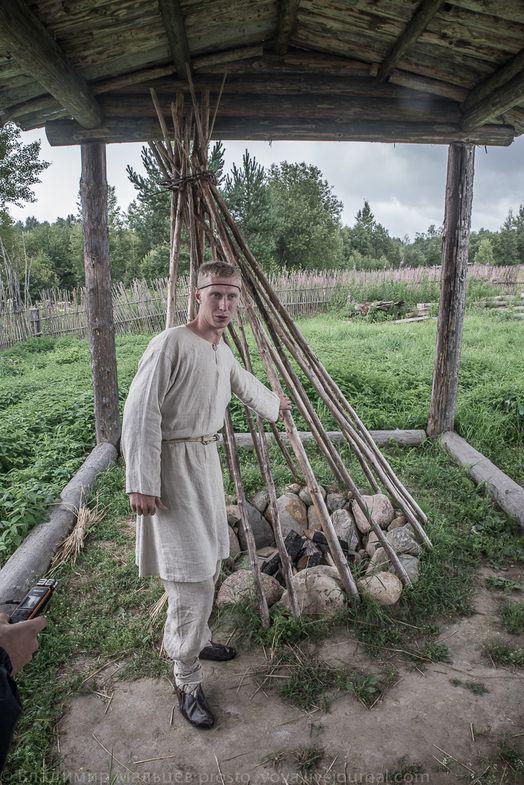
Cooking in the oven requires a special temperature regime - longing. For example, preparing gray soup. They are called gray because of its gray color. How to cook them?
To begin with green cabbage leaves are taken, those that were not included in the head, finely whipped, add some salt and placed under the yoke of the week, for fermentation. More ing need pearl barley, meat, onions, carrots. The ingredients are placed in a pot, and put it in the oven, where he will hold for several hours. In the evening a very satisfying and a thick dish is ready.
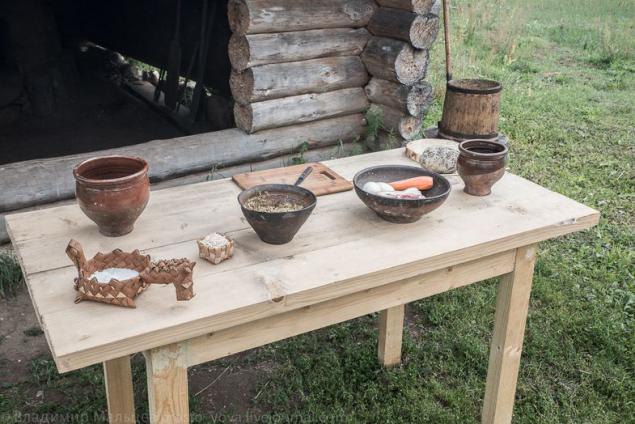

That's how our ancestors lived. Life was not easy. Often had poor harvests, more often - Tatar raids, the Vikings simply bandits. Principal export furs, honey, skins. The villagers gather mushrooms and berries, various herbs, fished.
In the defense of the enemy warrior was the basis gear chain mail, shield, helmet. Of weapons - a spear, ax, sword. Mail is not to say that light, but unlike Latin, it can be run. Well, we are running around a bit:-)
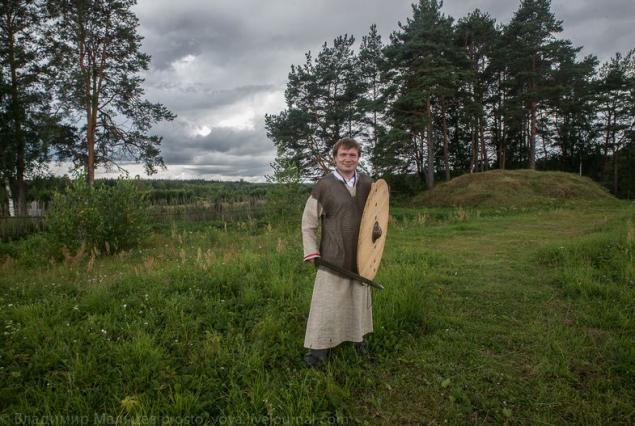
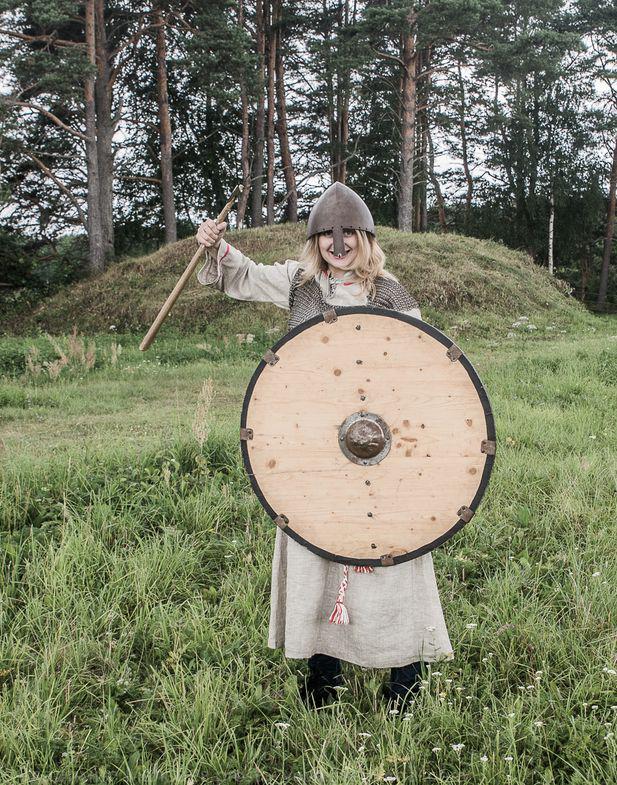
Source: prosto-vova.livejournal.com
If someone thinks that life was sweet while, something very wrong.

Prior to this, a simple Russian peasant life was very different.
Usually the person was living up to 40-45 years and died an old man. A grown man with a family and children, he was considered in 14-15 years, and it even earlier. Get married not for love, wooing the bride's son went to his father.
Time for leisure activities people did not have at all. In the summer time, everything takes work in the winter firewood and homework for the manufacture of tools and household utensils, hunting.
Let's look at the Russian village of the 10th century, which, however, differs little from the village as the 5th century and 17th century ...
In the historical and cultural complex "Lubytino" We were under the rally dedicated to the 20th anniversary of the group of companies "Autoworld". He was not in vain is called "Single storey Russia" - see how our ancestors lived, it was very interesting and informative.
In Lubytino on the place of residence of the ancient Slavs, among mounds and graves real village recreated 10th century, with all the outbuildings and the necessary utensils.

We begin with the common Slavic hut. Cabin rubles of logs and covered with birch bark and turf. In some regions, such as the roof huts were covering with straw and wood chips somewhere. Surprisingly, the service life of such a roof is only slightly less than the life of the entire house, 25-30 years, and the house served as age 40. Given the time of life at that time, the house is just on human life and missing.
By the way, in front of the house covered platform - these are the canopy of a song about the "new canopy, maple».

Fired hut on black, that is, the chimney stove does not have smoke coming out through the small window under the roof and through the door. Normal windows either, and the door height of only about one meter. This is done in order not to let the heat out of the house.
When the furnace furnace soot deposited on the walls and roof. In the furnace of "the black" has one big advantage - in a house like no rodents and insects.

Of course, the house is on the ground without any foundation, the lower crowns simply rely on a few large stones.

That's the way the roof is made

And here is the oven. Mounted on a pedestal of clay-covered stone fireplace logs. Stoked the furnace in the early morning. When the oven is heated, it is impossible to be in the house, there was only a housekeeper, cook, all the rest went into the street to do business, in any weather. After oven heat their stones gave heat until the next morning. In the oven and cooking food.

Here is the inside of the hut. Slept on benches, arranged along the walls, they sat eating. The children slept in the loft, in this photo can not see them, they are top of the head. In winter, the house took young livestock, so he did not die from the cold. The hut also washed. Can you imagine what the air was there, as it was warm and comfortable. It becomes immediately clear why life expectancy was so small.

In order not to drown the house in the summer when it is not needed, the village had a separate small building - bread oven. There baked bread and cooked.

Grain was stored in the barn - building, raised on poles above the ground to protect products from rodents.

In the barn were built Soucek, remember - "bottom of the barrel scraped ..."? This special wooden boxes in which the grain fell asleep on top, and took him from below. Since grain is not stale.

Also in the village was tripled glacier - the cellar, which was laid in the spring ice, pour hay and lay there almost until next winter.
Clothing, skins, not currently required utensils and weapons were stored in crates. Also used the cage when the husband and wife had to retire.


Barn - this building was used for drying sheaves and threshing grain. The heated stones were formed in the center, on the poles fit bundles and peasant drying them, constantly turning. Then threshed grain and veyalis.

Cooking in the oven requires a special temperature regime - longing. For example, preparing gray soup. They are called gray because of its gray color. How to cook them?
To begin with green cabbage leaves are taken, those that were not included in the head, finely whipped, add some salt and placed under the yoke of the week, for fermentation. More ing need pearl barley, meat, onions, carrots. The ingredients are placed in a pot, and put it in the oven, where he will hold for several hours. In the evening a very satisfying and a thick dish is ready.


That's how our ancestors lived. Life was not easy. Often had poor harvests, more often - Tatar raids, the Vikings simply bandits. Principal export furs, honey, skins. The villagers gather mushrooms and berries, various herbs, fished.
In the defense of the enemy warrior was the basis gear chain mail, shield, helmet. Of weapons - a spear, ax, sword. Mail is not to say that light, but unlike Latin, it can be run. Well, we are running around a bit:-)


Source: prosto-vova.livejournal.com



